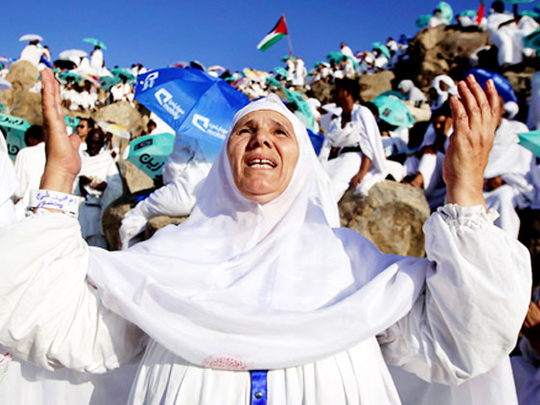
The positive spillover effects of expenditures relating to the annual Haj and Umrah are exceptional. The Haj reaches its climax this week with several million pilgrims converging on Makkah.
The Umrah or lesser Haj can take place anytime but is popular in the fasting month of Ramadan. A recent report by Ernst & Young tracing hotel occupancy in the Middle East confirmed that revenue levels for hotels in Makkah and Madinah were up by 55 per cent and 52 per cent in August, respectively.
The reason for that is simple — Ramadan arrived in August this year. Yet heat has not deterred many Muslims from making their way to Makkah. In fact, hotel occupancy stood at an astonishing 91 per cent in Makkah thanks to strong demand during the last ten days of Ramadan. Understandably, statistics concerning the hotel business in Saudi Arabia were the best among their counterparts elsewhere in the Gulf Cooperation Council (GCC).
To be sure, securing reliable statistics about returns during the Haj and Umrah is a daunting task in the kingdom, reflecting problems with transparency. This partly reflects the fact that some Saudi business owners tend to report lower than actual figures in order to limit payment of 2.5 per cent Zakat tax. Zakat is a form of Islamic tax on revenues.
Corruption ranking
The absence of reliable statistics partly explains the not so outstanding ranking of Saudi Arabia in the Corruption Perception Index (CPI) issued by Transparency International.
The 2010 version of CPI ranked Saudi Arabia number 50 worldwide, considerably behind fellow GCC states Qatar and the UAE, in turn ranked 19 and 28, respectively.
Nevertheless, available statistics point to extraordinary returns. According to a field study dating back to several years, the monetary value of activities related to the Haj and Umrah exceeds $30 billion (Dh110.1 billion). The figure covers travel, accommodation and living expenses, as well as cost of animals for sacrifices.
The average cost of sacrificed animals amounts to about $130 per pilgrim. Other expenditures deal with purchases of gifts and spending on telecommunications.
The statistics reflect the multiplier effect on the economy, as every riyal spent brings about four additional riyals.
Undoubtedly, this is a sizeable amount by virtue of making up around 7 per cent of the kingdom's gross domestic product of $468 billion.
Among other things, the annual Haj in particular serves as a golden opportunity for Saudi businesses to launch new consumer products.
Supply is more important than demand during the Haj, as many pilgrims show a tendency to buy anything and everything.
In addition, the Haj season provides employment opportunities for thousands of Saudi nationals. Some Saudis, including youngsters, engage in simple trading activities such as selling foodstuffs and prayer beads. Some other Saudis and foreign residents use their private vehicles to transport pilgrims.
Also, some Makkah residents rent their structures to firms arranging pilgrims' stay to support their living expenses throughout the year. Undoubtedly, some activities related to the Haj go unreported due to the lack of a comprehensive tax regime.
Growing demand
Four cities in western Saudi Arabia benefit substantially from the Haj, namely Makkah, Madinah, Jeddah and Taif.
King Abdul Aziz Airport in Jeddah serves as the gateway to Makkah. The airport is undergoing a major expansion in order to accommodate growing demand.
To the delight of Saudi tourism officials, some wealthy pilgrims show interest in visiting other places in the vast kingdom, including tourist sites and industrial towns, not far from the holy places. Clearly, the benefits of the Haj abound as indicated in the Quran.
The writer is a Member of Parliament in Bahrain.












